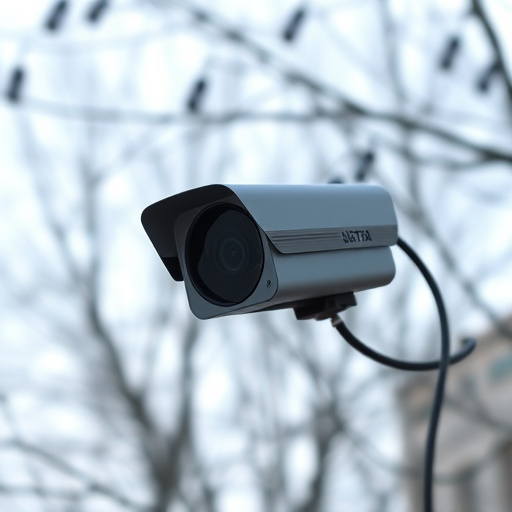Hidden Cameras for Home Monitoring offer enhanced security and peace of mind, with strategic placement crucial for comprehensive coverage. Visibly place cameras at entry points and hide them in common areas or objects. Discreet installation in overlooked spots like attics, basements, closets, and appliances is key. Balance security with privacy concerns, comply with legal frameworks, and foster trust through open communication. Choose high-definition, wireless cameras for optimal coverage and real-time access via apps. Regularly test and maintain the system for continuous, unobtrusive surveillance.
“Uncover the art of discreet surveillance with our comprehensive guide on hidden cameras for home monitoring. Explore strategic placement techniques to enhance your home’s security, ensuring every angle is covered without compromising privacy. From identifying optimal spots within your sanctuary to understanding ethical boundaries and choosing advanced technology, this guide equips you with knowledge. Learn how to test and maintain these silent sentinels, fostering a safe haven while respecting personal boundaries.”
- Understanding Hidden Camera Needs for Home Safety
- Identifying Discreet Placement Spots Around Your Home
- Ethical Considerations: Privacy and Legal Aspects of Hidden Cameras
- Choosing the Right Technology for Your Monitoring System
- Testing and Maintaining Secretly Placed Surveillance Equipment
Understanding Hidden Camera Needs for Home Safety
Hidden cameras for home monitoring have become essential tools for enhancing security and peace of mind. When planning their placement, consider both visible and concealed locations to ensure comprehensive coverage. Visibly placed cameras act as deterrents and serve as a clear signal that your home is under surveillance. They can be strategically positioned at entry points, such as doors and windows, to capture any unauthorized access attempts.
Conversely, hidden cameras provide an extra layer of protection by capturing unawares moments without drawing attention. These devices can be discreetly installed in common areas like living rooms, kitchens, and hallways, or even placed within everyday objects like fake smoke detectors or potted plants. Understanding your home’s unique layout and potential vulnerabilities is key to determining the optimal placement for hidden cameras, ensuring a robust security network tailored to your specific needs.
Identifying Discreet Placement Spots Around Your Home
When it comes to hidden cameras for home monitoring, discreet placement is key. Start by identifying areas in your home where an intruder might try to hide or access sensitive spaces. This could include attics, basements, closets, and even inside appliances like fridges or ovens. These spots offer potential cover and are often overlooked during routine checks.
Consider the lighting as well; shadows can provide a perfect hiding place for a camera. Position your hidden cameras strategically within these areas to capture clear footage without raising suspicion. Remember, the goal is to create an effective surveillance network while maintaining the appearance of normality in your home environment.
Ethical Considerations: Privacy and Legal Aspects of Hidden Cameras
When considering hidden camera placement for home monitoring, it’s crucial to balance security needs with ethical and legal considerations. The use of hidden cameras raises significant privacy concerns, as they can capture intimate moments or personal spaces without individuals’ knowledge or consent. In many jurisdictions, there are strict laws regarding surveillance, including requirements for transparency, notification, and reasonable grounds for deployment.
Homeowners employing hidden cameras should be aware of these legal frameworks to ensure compliance. Best practices include clearly communicating the presence of cameras to household members and visitors, obtaining informed consent where necessary, and restricting camera access to authorized areas only. Respecting privacy rights not only avoids potential legal repercussions but also fosters a sense of trust and security for all occupants.
Choosing the Right Technology for Your Monitoring System
When setting up a home monitoring system using hidden cameras, selecting the appropriate technology is paramount. The market offers a wide array of options, from sophisticated WiFi-enabled devices to more discreet hardwired systems. For comprehensive coverage, consider high-definition (HD) or 4K resolution cameras that provide clear and detailed footage. These advanced models often come with motion sensors and night vision capabilities, ensuring you capture crucial evidence without compromising on quality.
Choosing the right technology depends on your specific needs. If discreetness is paramount, opt for hidden cameras designed to blend seamlessly into your environment. These can be strategically placed in common areas or areas of concern, such as entry points or valuable asset locations. Alternatively, for a more comprehensive setup, wireless cameras with cloud storage options provide real-time access and remote monitoring through smartphone apps, offering convenience and peace of mind.
Testing and Maintaining Secretly Placed Surveillance Equipment
Regular testing and maintenance are vital components of a successful hidden cameras for home monitoring strategy. Since the primary goal is to maintain secrecy, ensuring the equipment operates discreetly and effectively is crucial. Begin by setting up periodic checks to verify camera functionality, including image/video quality, audio clarity, and motion detection sensitivity. Use a dedicated testing device or smartphone app designed for this purpose to simulate real-world conditions without alerting potential suspects.
Additionally, establish a maintenance routine that includes battery replacements (for wireless cameras), memory card management, and software updates. Regular cleaning of the camera lenses can also help maintain optimal picture quality. Schedule these tasks in line with your overall home monitoring strategy to ensure continuous, unobtrusive surveillance while keeping the equipment in top condition.
Disguised recording equipment can significantly enhance home safety, but responsible placement is key. By understanding your security needs, identifying discreet spots, considering ethical and legal aspects, choosing the right technology, and maintaining surveillance systems, you can leverage hidden cameras for effective home monitoring without compromising privacy. Implement these strategies to create a secure environment while respecting personal boundaries.
